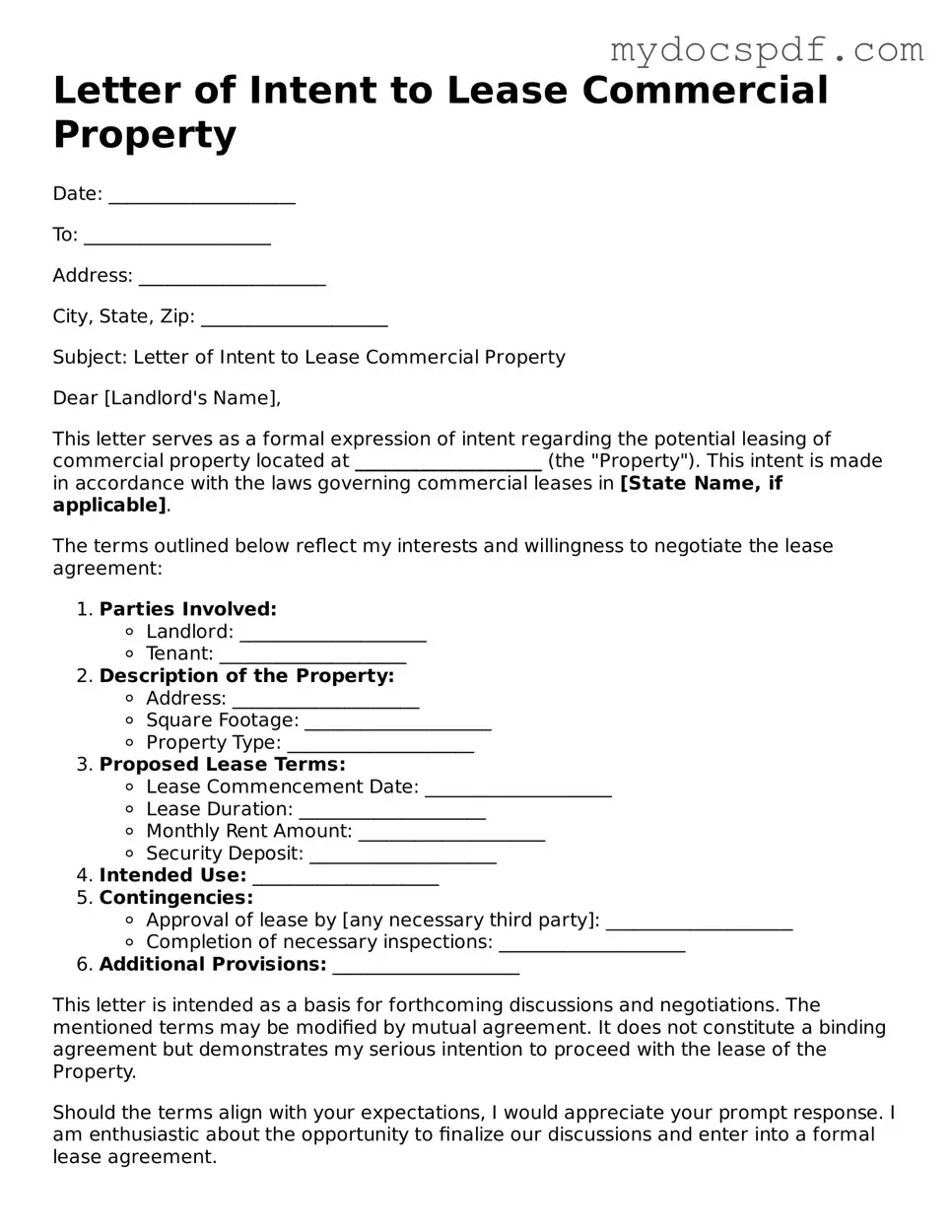Letter of Intent to Lease Commercial Property
Date: ____________________
To: ____________________
Address: ____________________
City, State, Zip: ____________________
Subject: Letter of Intent to Lease Commercial Property
Dear [Landlord's Name],
This letter serves as a formal expression of intent regarding the potential leasing of commercial property located at ____________________ (the "Property"). This intent is made in accordance with the laws governing commercial leases in [State Name, if applicable].
The terms outlined below reflect my interests and willingness to negotiate the lease agreement:
- Parties Involved:
- Landlord: ____________________
- Tenant: ____________________
- Description of the Property:
- Address: ____________________
- Square Footage: ____________________
- Property Type: ____________________
- Proposed Lease Terms:
- Lease Commencement Date: ____________________
- Lease Duration: ____________________
- Monthly Rent Amount: ____________________
- Security Deposit: ____________________
- Intended Use: ____________________
- Contingencies:
- Approval of lease by [any necessary third party]: ____________________
- Completion of necessary inspections: ____________________
- Additional Provisions: ____________________
This letter is intended as a basis for forthcoming discussions and negotiations. The mentioned terms may be modified by mutual agreement. It does not constitute a binding agreement but demonstrates my serious intention to proceed with the lease of the Property.
Should the terms align with your expectations, I would appreciate your prompt response. I am enthusiastic about the opportunity to finalize our discussions and enter into a formal lease agreement.
Thank you for considering this proposal. I look forward to your reply.
Sincerely,
____________________
Name: ____________________
Title (if applicable): ____________________
Contact Information: ____________________
